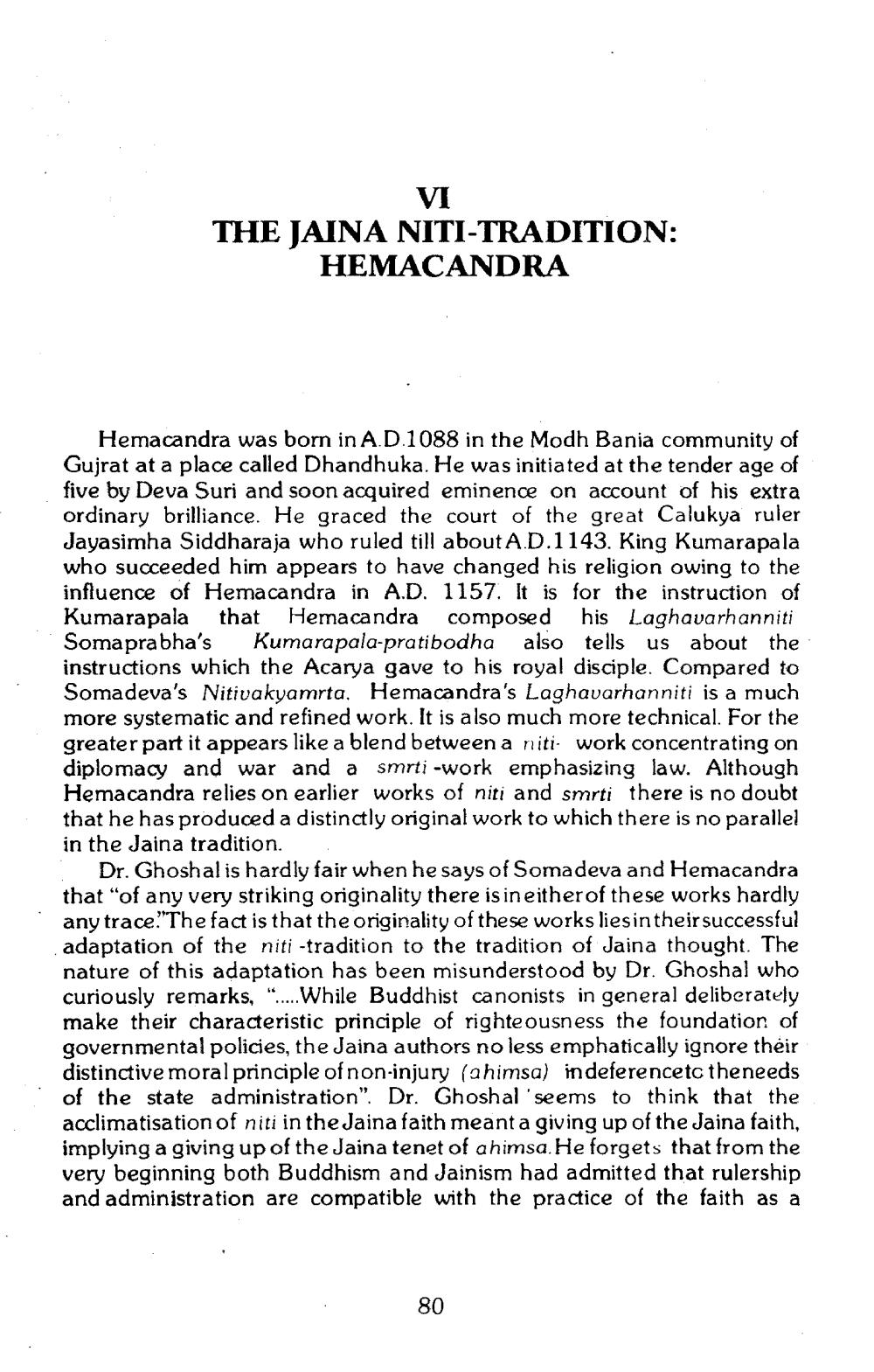________________
THE JAINA NITI-TRADITION:
HEMACANDRA
Hemacandra was born in A.D.1088 in the Modh Bania community of Gujrat at a place called Dhandhuka. He was initiated at the tender age of five by Deva Suri and soon acquired eminence on account of his extra ordinary brilliance. He graced the court of the great Calukya ruler Jayasimha Siddharaja who ruled till about A.D.1143. King Kumarapala
ucceeded him appears to have changed his religion owing to the influence of Hemacandra in A.D. 1157. It is for the instruction of Kumarapala that Hemacandra composed his Laghavarhanniti Soma prabha's Kumarapala-pratibodha also tells us about the instructions which the Acarya gave to his royal disciple. Compared to Somadeva's Nitivakyamrta. Hemacandra's Laghavarhanniti is a much more systematic and refined work. It is also much more technical. For the greater part it appears like a blend between a niti work concentrating on diplomacy and war and a smrti -work emphasizing law. Although Hemacandra relies on earlier works of niti and smrti there is no doubt that he has produced a distinctly original work to which there is no parallel in the Jaina tradition.
Dr. Ghoshal is hardly fair when he says of Somadeva and Hemacandra that "of any very striking originality there is in either of these works hardly any trace"The fact is that the originality of these works liesin their successful adaptation of the niti -tradition to the tradition of Jaina thought. The nature of this adaptation has been misunderstood by Dr. Ghoshal who curiously remarks, "..... While Buddhist canonists in general deliberately make their characteristic principle of righteousness the foundation of governmental policies, the Jaina authors no less emphatically ignore their distinctive moral principle of non-injury (ahimsa) in deferencetc theneeds of the state administration". Dr. Ghoshal'seems to think that the acclimatisation of niti in the Jaina faith meant a giving up of the Jaina faith, implying a giving up of the Jaina tenet of ahimsa. He forgets that from the very beginning both Buddhism and Jainism had admitted that rulership and administration are compatible with the practice of the faith as a
80




